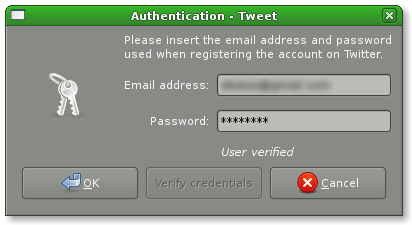Today I committed to Clutter trunk ClutterScript, the initial support for defining the scenegraph using external files. You can think of it as the GtkBuilder equivalent for Clutter.
During the 0.3 development cycle we considered using XML and JSON, and opted for the latter because while XML is quite easy for applications to write, JSON is more geared towards human to read ((obviously nothing prevents adding an XML parser, and use both)). Also, JSON syntax is really parser-friendly, with only three barewords and six symbols.
Another nice thing about JSON is that many high-level languages already have some JSON module, so manipulating data streams would be quite easy for, let’s say, Perl or Python before feeding those streams to Clutter.
Defining a simple scene with JSON and ClutterScript is quite easy:
{
"id" : "main-stage",
"type" : "ClutterStage",
"fullscreen" : true,
"children" : [
{
"id" : "red-button",
"type" : "ClutterRectangle",
"x" : 100,
"y" : 100,
"width" : 100,
"height" : 100
"color" : "#ff0000ff"
},
{
"id" : "green-button",
"type" : "ClutterRectangle",
"x" : 300,
"y" : 100,
"width" : 100,
"height" : 100
"color" : "#00ff00ff"
},
{
"id" : "blue-button",
"type" : "ClutterRectangle",
"x" : 600,
"y" : 100,
"width" : 100,
"height" : 100
"color" : "#0000ffff"
}
]
}
This will draw a red, a green and a blue square, 100×100 pixels of size, inside a full screen stage.
You can then retrieve the "main-stage" object (as well as any other object using its id) and connect signals and manipulate them with the usual Clutter API.
At the moment ClutterScript is not 100% complete – I still need to add support for defining behaviours (mostly a matter of defining an object syntax); complex properties parsing; merging (and, possibly, unmerging) of “snippets” of objects. Plus, obviously, more sanity checks in the scene building code.
To parse JSON there are a few C libraries, but I opted for writing a GObject-based one – which, in one of my usual moments of lack of originality, I called JSON-GLib. Clutter uses an in-tree copy because I might need API changes to make Clutter parsing code easier, but the library is already auto-tooled, tested and 100% documented (it is missing GObject deserialization, but that will have to wait). JSON-GLib is released under the terms of the LGPL and it’s available in my personal git repository, which you can clone with the usual:
git clone http://folks.o-hand.com/~ebassi/git/json-glib.git
Update@2007-10-09T15:07+0100: Just landed in trunk: defining behaviours (not every type, complex types like the path-based ones are still to be implemented), merging tests and more sanity checks. Defining a rotate behaviour boils down to:
{
"id" : "rotate-behaviour",
"type" : "ClutterBehaviourRotate",
"angle-begin" : 0.0,
"angle-end" : 360.0,
"axis" : "z-axis",
"direction" : "cw",
"alpha" : {
"timeline" : { "loop" : true, "num-frames" : 300, "fps" : 60 },
"function" : "sine"
}
}
Really soon now: all behaviours, complex properties and more.





